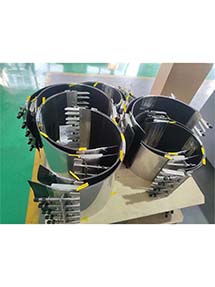butterfly valve handwheel
The Butterfly Valve Handwheel A Key Component in Valve Operation
The butterfly valve is a widely used flow control device in various industries, including water treatment, chemical processing, and HVAC systems. One of the critical components that facilitate its operation is the handwheel. The handwheel is a simple yet effective mechanism that allows operators to manually control the opening and closing of the valve.
The Butterfly Valve Handwheel A Key Component in Valve Operation
The handwheel itself is designed for ease of use. Made from durable materials such as cast iron, stainless steel, or plastic, it is engineered to withstand the varying pressures and harsh environments that might be encountered in industrial applications. Additionally, handwheels can come in different sizes and designs, tailored to the specific needs of the valve and the system it operates within.
butterfly valve handwheel

One of the primary advantages of using a handwheel with a butterfly valve is the control it imparts to the operator. Manual operation allows for precise adjustments, which is crucial in scenarios where exact flow rates are essential. Furthermore, in the event of a power failure or system malfunction, the handwheel provides a reliable means of controlling the valve without relying on electric actuators.
However, there are some considerations when using a handwheel-operated butterfly valve. The manual operation can be labor-intensive, especially if the valve is large or located in an inconvenient position. In such cases, auxiliary mechanisms such as gear reductions or electric actuators can be employed to make operation more manageable while still retaining the option for manual control when necessary.
In conclusion, the butterfly valve handwheel is an essential element in the operation of butterfly valves. Its design prioritizes user-friendly operation while ensuring durability and reliability. Whether used in manual or automatic configurations, the handwheel enhances the functionality of the butterfly valve, making it a critical component in maintaining efficient fluid control systems across various industries. As technology evolves, we can expect to see continued advancements in the design and functionality of handwheels, further improving their role in industrial applications.
-
The Smarter Choice for Pedestrian AreasNewsJun.30,2025
-
The Gold Standard in Round Drain CoversNewsJun.30,2025
-
The Gold Standard in Manhole Cover SystemsNewsJun.30,2025
-
Superior Drainage Solutions with Premium Gully GratesNewsJun.30,2025
-
Superior Drainage Solutions for Global InfrastructureNewsJun.30,2025
-
Square Manhole Solutions for Modern InfrastructureNewsJun.30,2025
-
Premium Manhole Covers for Modern InfrastructureNewsJun.30,2025
